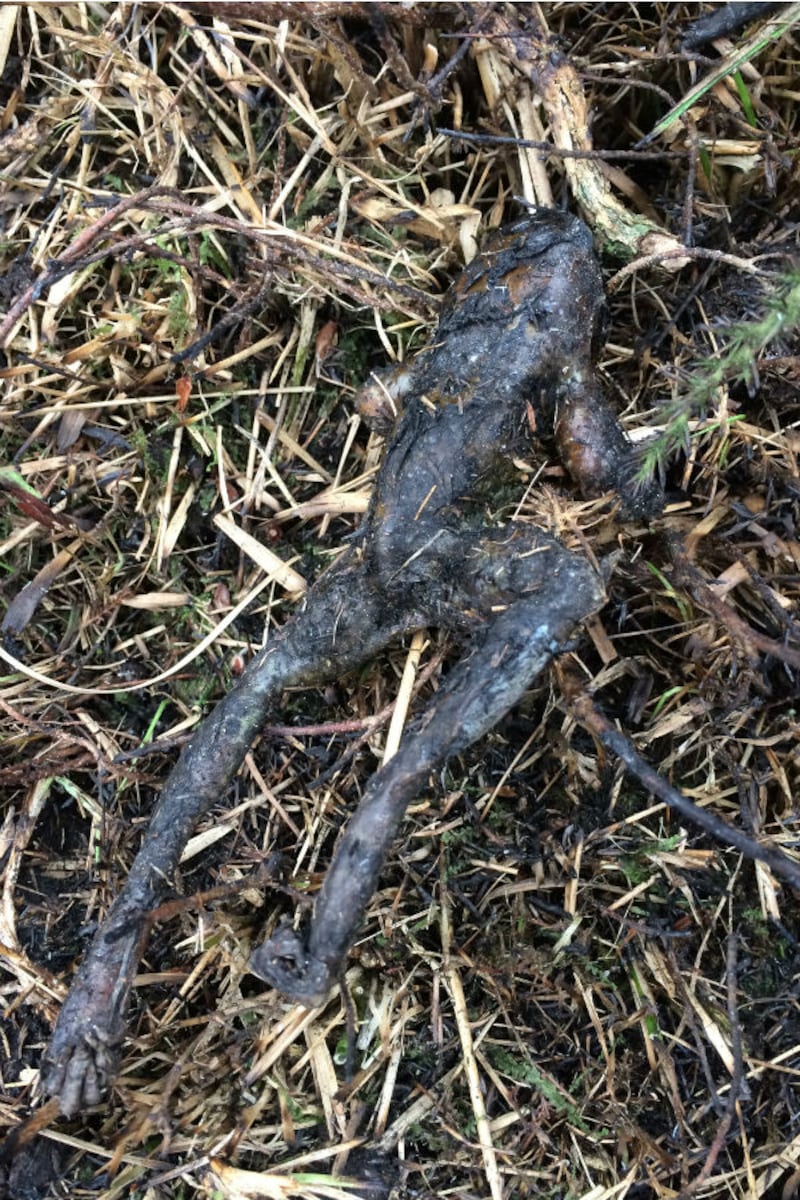Gorse fires across the countryside are "devastating" for wildlife and bird populations, conservation organisation BirdWatch Ireland has said.
Several fires have been reported in recent days, including a large blaze that raged for more than 30 hours on a mountain in Sligo.
Sligo County Council confirmed the fire incident at Killery, near Ballintogher - which it described as an area of "outstanding natural beauty" - was brought under control at 10.30pm on Thursday night.
Update on Gorse Fire Ballintogher @ 6.30pm Thursday https://t.co/cyejmb18n4 pic.twitter.com/6jNDutig66
— Sligo County Council (@sligococo) May 4, 2017
Update Gorse Fire : Crews have managed to protect 2 houses & in process of protecting forestry. Coast Guard chopper mobilised to assess fire pic.twitter.com/xrbFcELcY3
— Sligo County Council (@sligococo) May 3, 2017
Picture from Extensive gorse fire at Killery Ballintogher pic.twitter.com/fBly5sWlgK
— Sligo County Council (@sligococo) May 3, 2017
Some wildlife groups blame the fires on members of the hillfarming community, who they claim are burning in order to clear heather from their land.
On Friday, BirdWatch Ireland called for the enforcement of the regulations currently in place to protect birds and other wildlife, and the full regulation of burning as an activity.
‘Severe’ impact
Oonagh Duggan of BirdWatch Ireland said the impact of burning on birds of upland heather habitats and gorse scrub habitats varied depending on the time of the year, and could be "severe".
Also at risk from burning are red grouse, whinchat and meadow pipit, and 'amber-listed' species including skylark, stonechat and wheatear
“They can include the destruction of breeding and foraging habitat birds and other animals. Impacts can include the killing of wildlife which cannot get away fast enough (chicks and eggs, frogs, lizards, hares and leverets etc),” Ms Duggan said.
“The impacts on birds which will have begun breeding in March, April and May include the burning of nests, eggs and chicks, the destruction of habitat which birds forage in to feed themselves and their chicks.”
Ms Duggan said that earlier in spring, perhaps around March, the impacts potentially included complete destruction of nesting habitats and potentially nests of birds that have international protection under the EU’s Birds Directive.

Several birds listed as being of “conservation concern” in Ireland may also be impacted upon at that time.
Brink of extinction
Species that nested in upland habitats that were at risk when burning occurred in the areas they occupied in March, April and May included the hen harrier, merlin, golden plover and dunlin (schinzii race), and the breeding curlew, which is on the brink of extinction in Ireland.
Also at risk from burning are red grouse, whinchat and meadow pipit, and “amber-listed” species including skylark, stonechat and wheatear, as well as migratory species such as wheatear, cuckoo, ring ouzel, grasshopper warbler, redstart and nightjar.
Ms Duggan said the issue of burning as a land management tool was a particular problem when it was conducted at times when birds were breeding, and also when fires got out of control, burning “large swathes of the landscape and everything in its path”.
“However, even at other times of the year burning can impact on wildlife, including frogs and other animals,” she added.
Burning is illegal between March 1st and August 31st under section 40 of the Wildlife Act 1976.
Establish territories
This is to ensure basic legal protection for birds to reproduce and to let them establish territories, make nests, lay eggs and to fledge and rear chicks.
BirdWatch Ireland noted studies in the UK had also shown scientific evidence of negative impacts of burning on water quality and the wider environment, including impacts on peat chemistry and river ecology.
The Irish Wildlife Trust, BirdWatch Ireland, An Taisce and the Hedge Laying Association of Ireland have opened a petition calling for changes to legislation proposed by Minister for Heritage Heather Humphreys.
BirdWatch called for the enforcement of current regulations aimed at protecting birds and other wildlife and the full regulation of burning as an activity
They say proposed changes to Section 40 of the Wildlife Act contained in the Heritage Bill 2016 are unjustified and damaging to natural heritage.
Pilot law
The Minister is proposing a two-year pilot law which would allow cutting, destroying and removal of hedgerows in August and burning in the uplands in March.
BirdWatch called for the enforcement of current regulations aimed at protecting birds and other wildlife and the full regulation of burning as an activity.
It also called for an ecological impact assessment on sites to be burned.
The body said there should be “absolutely no changes” to the dates set out in the Wildlife Act unless “robust Irish research shows that there would be no impact on Irish breeding birds”.
It said a “stakeholder-led” approach with hill farmers at its core for uplands where farming and conservation of upland species went hand in hand was “urgently needed”.







